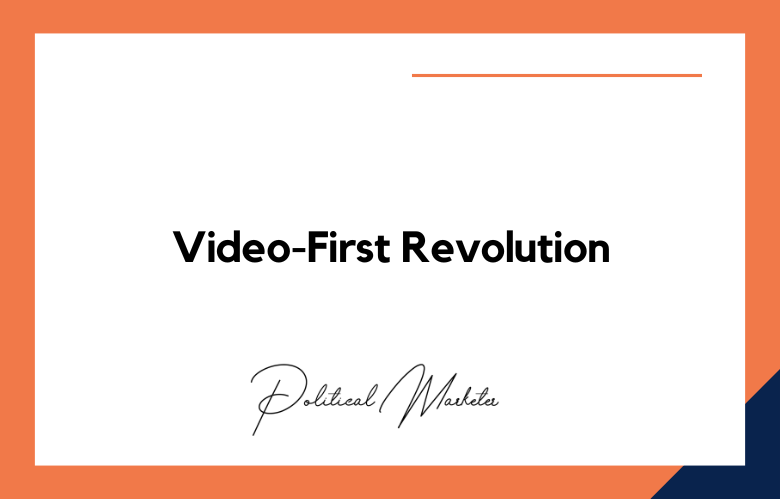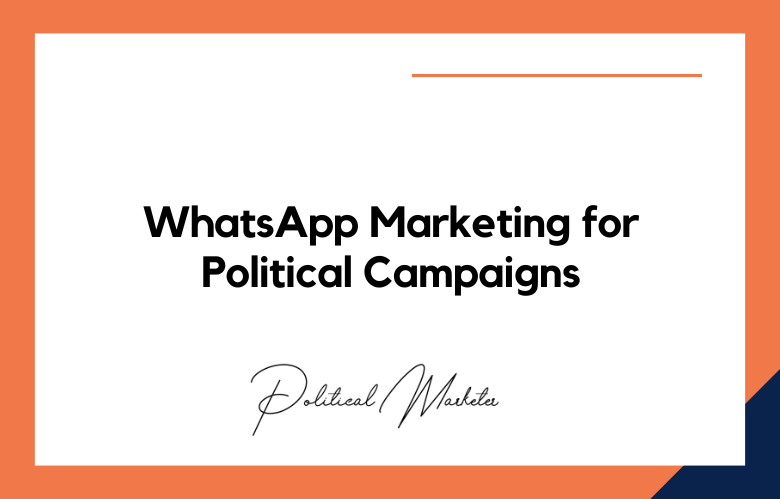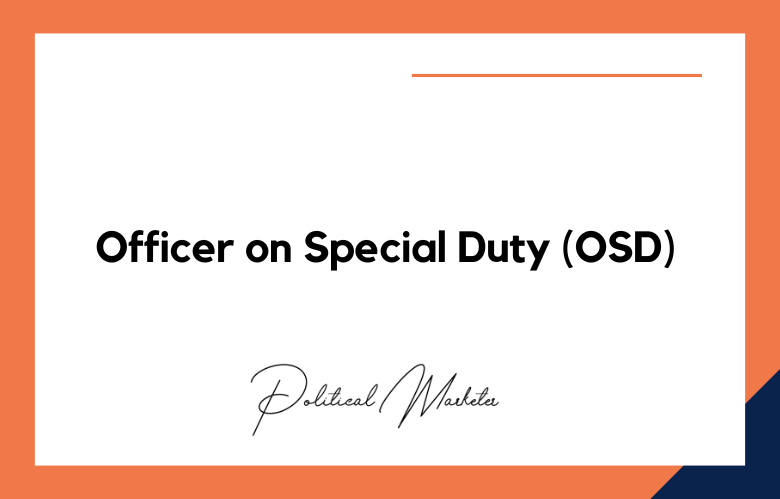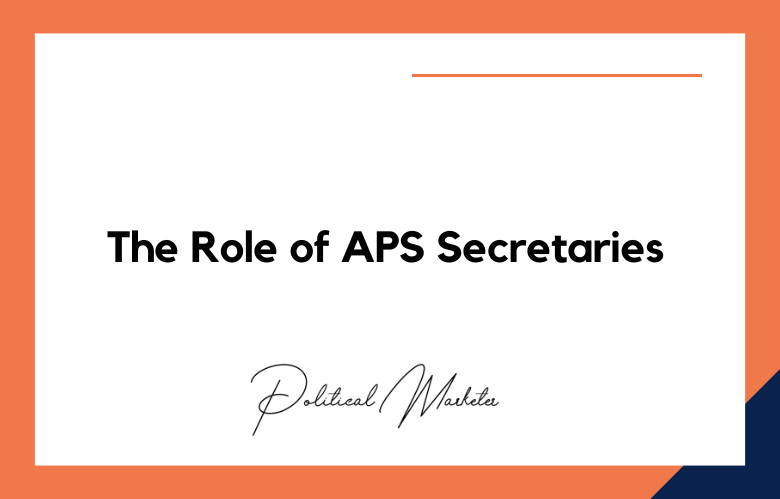In the world of politics, media is essential. With so much happening in the news and social media, political campaigns must have a comprehensive media strategy covering all aspects of their messaging. That’s why it’s essential to understand the difference between earned, owned, and paid media when crafting your campaign’s messaging.
A Guide to Media Strategies for Political Campaigns
Earned Media for Political Campaigns
Earned media is any coverage you receive from a third-party source. It can be anything from an article in a newspaper about your campaign to an endorsement from a prominent figure or organization. It also includes mentions on social media and positive reviews from supporters. Earned media can be one of your most powerful tools during a campaign; getting enough deserved media attention can go viral and reach millions with minimal effort.
Earned media is publicity obtained through non-paid channels. It could include traditional press coverage such as newspaper and magazine articles, TV and radio appearances, or blog posts written by influencers in your industry. The key to gaining earned media coverage is creating shareable and exciting content and stories.
Earned media refers to any press coverage you receive, regardless of where it comes from or how it’s shared. It can include traditional news outlets such as newspapers and magazines, blogs, podcasts, online video channels, and other digital sources. The key here is that this type of media coverage is “earned”; you don’t have to pay for it or actively promote it yourself. It’s a result of your efforts – providing interesting content or creating buzz about your campaign – and doesn’t cost anything extra.
Earned media refers to any publicity or coverage your campaign receives without paying for it. It could include mentions in newspapers, magazine articles, radio shows, podcasts, and online blogs. Earned media can be very beneficial since it comes from a third-party source and often carries more weight than paid advertising or promotions.
However, earned media can also be unpredictable—you never know if or when a story about your campaign will appear. Measuring the return on investment (ROI) from earned media is difficult since there is no cost associated with this type of advertisement.
Owned Media for Political Campaigns
Owned media refers to any outlets owned by your campaigns, such as your website, blog, and social media accounts. Owned media is critical because it helps you control the narrative surrounding your drive by allowing you to post content directly without relying on anyone else for coverage. Additionally, having vital owned media outlets will enable you to track who visits them and see how effectively they reach potential voters and donors.
Owned media is any content your campaign creates that you control entirely. It includes social media accounts (Facebook, Twitter, Instagram), websites or blogs, email lists, etc. Campaigns must be active on social media to engage with potential voters and draw attention to their platform. You should also ensure that your website or blog is updated regularly with fresh content highlighting what makes your candidate stand out.
Owned media refers to any content you create yourself, such as websites, blogs, social media accounts, and other forms of digital marketing (email newsletters, etc.). This type of content provides an opportunity for more direct engagement with voters and gives campaigns more control over how their messages are presented.
It also allows campaigns to target specific demographics more quickly than with earned or paid media. However, creating compelling content requires significant time and money.
Owned media is any advertisement or promotion your campaign creates or owns outright, including websites, email newsletters, social media accounts, and other digital marketing strategies. The benefit of owned media is that you have complete control over the message you want to send about your campaign.
You also have access to detailed analytics, which can help you track ROI and adjust as needed. However, owned media requires more time and effort to create content that resonates with your audience and drives engagement with your campaign’s message.
Paid Media for Political Campaigns
Paid media is exactly what it sounds like—paid for by your campaign. It can include online ads, radio spots, TV commercials, mailers, etc. Paid media is great because it gives you control over where and when ads are seen/heard. It allows you to target specific audiences with tailored messages depending on what issue they care about or where they live in the election district.
Additionally, digital ads will enable you to track their effectiveness so you know where best to invest future resources into more targeted campaigns.
Paid media refers to promotional activities such as ads on TV/radio/digital platforms or print ads in newspapers/magazines. If done correctly, paid advertising can be effective. It allows campaigns to target audiences with tailored messages about why they should vote for a particular candidate.
However, paid promotions can be expensive depending on where you choose to advertise, so it’s essential to research which platforms will be most effective for your budget before making any final decisions.
We have paid media, which refers to any advertising or promotion that requires payment to reach its intended audience (such as television ads or radio spots). Paid media can be highly effective if used correctly; drawbacks include high costs and limited reach depending on the medium chosen (e.g., television vs. radio).
Additionally, depending on the platform used for paid advertisements (Facebook Ads vs. Google Adwords), campaigns may still need to invest time in creating effective targeted ads to get the best results from their investment.
Paid media is any advertisement or promotion you pay to get the word out about your campaign. It could include television ads, radio spots, print ads in newspapers and magazines, and digital marketing strategies such as sponsored posts on social networks or Google Ads campaigns.
The benefit of paid advertisements is that they are easy to measure; you have access to detailed analytics, which allow you to track ROI and adjust accordingly if needed. However, paid advertisements come with a hefty price tag and require significant resources to be effective.
Critical Differences Between Earned, Owned, and Paid Media for Political Campaigns
Political campaigns leverage various types of media—earned, owned, and paid—to communicate their messages and influence voters. Each type plays a unique role in the overall strategy:
- Earned Media refers to publicity gained through efforts beyond paid advertising, such as mentions in news articles, television program features, or social media commentary. Its authenticity and potential are crucial to significantly impacting public perception without direct cost.
- Owned Media encompasses all the channels a campaign controls, like official websites, blogs, and social media accounts. This media type allows for complete message control and direct engagement with voters.
- Paid Media involves all advertising bought by a campaign, whether traditional ads on TV and radio or digital ads on platforms like Google and Facebook. This is essential for reaching a broad audience quickly and tailor messaging to specific demographics.
Understanding the distinct characteristics and optimal use of each media type can profoundly influence the effectiveness of political campaigns.
Maximizing Impact: How Earned, Owned, and Paid Media Shape Political Campaigns Today
In the dynamic landscape of political campaigning, the convergence of earned, owned, and paid media forms the backbone of effective communication strategies. This triad amplifies a campaign’s reach, shapes its narrative, influences public perception, and drives voter engagement, each serving a unique but complementary purpose.
Earned Media is the coverage a campaign receives through various non-paid channels like news reports, editorials, blogs, and mentions on social media platforms. It’s the kind of publicity generated from a campaign’s actions, the reactions it evokes from the public and the press, and the organic spread of its message. Earned media is invaluable because of its credibility; when third-party sources validate a campaign’s message, it gains trust that owned and paid media cannot achieve alone. Strategic actions such as hosting impactful events, engaging with hot-button issues, and maintaining robust relations with the media can increase a campaign’s visibility and favorability through earned media.
Owned Media refers to any communication channel that a campaign directly controls. This includes websites, blogs, email campaigns, and social media profiles. Owned media is a central campaign message hub, offering a controlled environment for detailed policy discussions, event announcements, and direct voter engagement. The key to maximizing the impact of owned media lies in creating high-quality, compelling content that resonates with the electorate, encouraging shares and further interaction.
Paid Media encompasses all forms of paid advertising — from traditional print, radio, and television ads to digital ads and sponsored posts on social media. While it requires financial investment, paid media is crucial for targeted messaging, allowing campaigns to reach specific demographic groups with tailored messages at critical times. Paid media can effectively complement earned and owned media by boosting visibility in saturated media environments or reaching segments of the electorate that are otherwise difficult to engage.
Together, earned, owned, and paid media create a multifaceted approach that allows political campaigns to comprehensively engage with the electorate, tailor their messages, and respond dynamically to the evolving political landscape. While each media type is powerful, it works best when strategically integrated with the others to maximize the campaign’s overall impact.
Decoding Earned, Owned, and Paid Media: A Guide for Political Campaigns in the Digital Age
In the fast-paced world of political campaigns, understanding the distinctions between earned, owned, and paid media is more crucial than ever. As campaigns increasingly move to digital platforms, strategically leveraging these media types can create powerful narratives and influence voter behavior.
Earned Media: This type of media is free publicity generated by the media and the public. In the digital age, earned media extends beyond traditional news outlets to include viral content, shares, reposts, and mentions on social media platforms. The credibility and organic reach of earned media make it a powerful tool for shaping public opinion, but its uncontrollable nature can sometimes backfire.
Owned Media: Owned media refers to any web property that a campaign can control and is unique to its brand, such as official campaign websites, blogs, and social media pages. In the digital era, owned media is the central hub for a campaign’s message and narrative. It’s a space for direct communication with voters, providing detailed information and policy positions, and a platform for digital campaigning.
Paid Media: With the saturation of information online, paid media has become essential for cutting through the noise. It includes traditional ads and digital ads that appear on various platforms. Paid media allows campaigns to precisely target specific demographics, using data-driven strategies to tailor messages that resonate with different groups. Despite its cost, the ability to control the ads’ placement, timing, and content makes paid media an indispensable part of modern political campaigns.
Navigating these three media types effectively can dictate a campaign’s success in the digital age, making it essential for political strategists to understand their intricacies and interactions.
Conclusion
The success of any political campaign relies heavily on understanding how earned, owned, and paid media work together to create an effective messaging strategy.
Knowing the differences between each media type will help you craft a comprehensive plan that reaches as many potential voters as possible with tailored content that speaks directly to them and their interests or concerns regarding the upcoming election.
By adequately leveraging all three types of marketing during a political campaign season, candidates can significantly increase their chances of winning!
Taking control of your media outlets for a political campaign is critical for success.
Utilizing Earned, Owned, and Paid media outlets can help influence your message to reach more voters.
Now that we’ve identified the differences between these types of outlets and their effectiveness within a campaign, you need to decide which ones work for you. It is important to remember to shape the narrative in the best way possible; own your message, or someone else will write your story for you.
Investing in proper political campaign consulting will help ensure that each outlet works together as part of an effective strategy that supports your mission.
Consulting helps you decide where your money should be allocated and guides you with creative ideas for engaging people through storytelling. By carefully balancing these three media platforms, you’re sure to grip voters’ attention and give yourself a fighting chance to obtain office during election season.
The knowledge of this blog post article and well-thought-out consulting can be the perfect ingredient to make or break an upcoming political campaign!
Call: +91 9848321284
Email: [email protected]
Frequently Asked Questions (FAQs)
What is the difference between earned, owned, and paid media in political campaigns?
Earned media is publicity gained through coverage and organic engagement; owned media is content the campaign controls (e.g., websites, social channels); paid media includes advertisements purchased by the campaign.
Why is it important to distinguish between earned, owned, and paid media?
Each media type plays a unique role in strategy, reach, credibility, and budget allocation, helping campaigns tailor communication efforts and maximize voter engagement.
What are examples of earned media in political campaigns?
Examples include news coverage, interviews on TV or radio, social media shares, user-generated content, and viral mentions that weren’t paid for.
How can a political campaign generate earned media?
By staging newsworthy events, issuing press releases, building relationships with journalists, using PR strategies, and creating buzzworthy digital content.
What are some owned media assets in a political campaign?
Campaign websites, official blogs, email newsletters, social media profiles, podcasts, and mobile apps are all considered owned media.
How does owned media contribute to political messaging?
It allows full control over content, tone, and delivery—helping build long-term relationships with voters and maintaining message consistency.
What is paid media in political campaigns?
Paid media includes TV, radio, print ads, Google Ads, social media advertising, influencer sponsorships, and paid digital banners used to reach a broader audience.
When should a campaign invest in paid media?
During high-stakes moments like debates, rallies, early voting, or final campaign days when rapid reach and visibility are crucial.
How do these media types interact with one another?
They work best together. Paid media drives traffic to owned platforms, while engaging owned content encourages sharing and can generate earned media organically.
Which media type is most cost-effective for political campaigns?
Owned media often has the highest ROI over time, as it builds direct voter relationships with minimal ongoing cost.
Is earned media more credible than paid media?
Generally, yes—earned media is seen as third-party validation and carries more trust compared to self-promotional paid content.
Can social media content fall under multiple categories?
Yes. An organic post on a campaign’s account is owned media, but if shared widely, it becomes earned media; if boosted, it turns into paid media.
What role does storytelling play in earned media success?
Compelling narratives can attract press coverage, spark emotional connections, and prompt viral sharing—key to driving earned media.
How can data help optimize media strategies?
Analytics can reveal which media types yield the highest engagement, conversions, or voter registrations, enabling smarter budget allocation.
What KPIs are associated with each media type?
Earned: media mentions, backlinks, sentiment. Owned: page views, email open rates. Paid: impressions, CTR, conversions, ROAS.
How does media mix strategy differ for national vs. local campaigns?
National campaigns may rely more on paid and earned media for broad reach, while local campaigns may focus on owned and community-driven earned media.
Can grassroots campaigns succeed with limited paid media?
Yes, by leveraging compelling owned content and generating organic earned media through authenticity, activism, and community support.
How do algorithms affect earned media in digital platforms?
Algorithms prioritize engaging and relevant content; campaigns must optimize timing, hashtags, and interaction to improve earned reach.
What is the biggest challenge in balancing all three media types?
Maintaining consistency in messaging, ensuring synergy between media types, and aligning them with campaign goals and voter sentiment.
What’s the future of integrated media strategies in politics?
AI, automation, and data-driven personalization will refine how paid, earned, and owned media are coordinated to drive influence and conversion.











